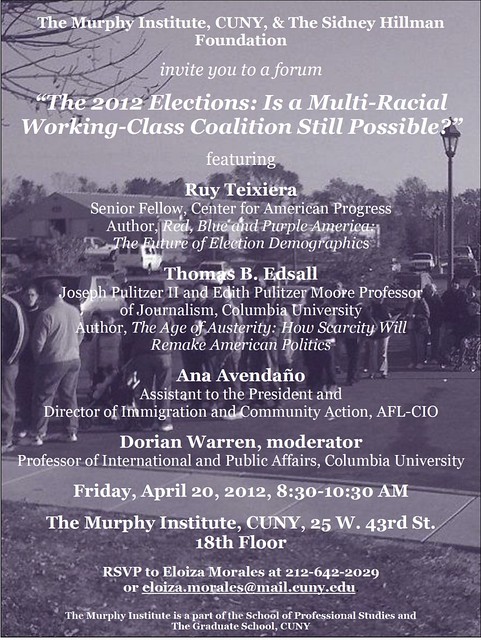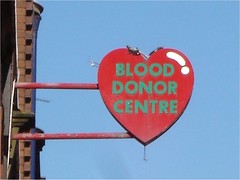
Dave Weigel of Slate interviews some residents of Sanford, Florida about how the Trayvon Martin shooting has affected their town of 53,000:
SANFORD, Fla.—McRobert’s Auto Center, a 54-year-old shop on the outskirts of downtown, has one of those movie-theater-style marquees with bold letters, perfect for slogans. On one side, the sign advertises tire-balancing service. On the other side—the side you see driving in from the suburbs—it reads SANFORD IS STILL A GOOD LITTLE TOWN.
It means what you think it means. Mark Carli, who’s worked here for four years, is sick of media frenzies, sick of marches, sick of race-baiting.
“I’m sympathetic that there was a life taken,” he says. “Central Florida’s just gotten over the—what was it, the Susan B. Anthony thing?” He’s trying to remember the murder case that gripped Orlando last year. “Sorry, no, Casey Anthony. My understanding of the problem there was that they jumped to conclusions and it hurt the prosecution.”
It’s a good piece of reporting, understated and darkly funny. Weigel lets his subjects speak for themselves and challenges us to draw our own conclusions.
Still, I would have liked to see Weigel challenge his subjects on their reflexive belief that Sanford is being unfairly blamed. After all, nobody remembers what town Casey Anthony came from. We remember the crime, but not the town. Caylee Anthony’s death had no effect on the town’s reputation because we understand that dangerous people can crop up anywhere.
Sanford is under a cloud because the police department is suspected of mishandling the shooting. The original chief of police stepped down. The Justice Department stepped in because the local authorities didn’t seem willing or able to pursue justice.
Police surveillance video of George Zimmerman being taken into custody conflicts with the police report. The police report claims that Zimmerman was bleeding from his nose and the back of his head at the scene and that his back was covered in dew and grass. In the video, Zimmerman appears clean, dry, and completely unscathed, just half an hour after the shooting. A digitally sharpened version of the video may show some lumps on the back of Zimmerman’s shaved head, but it’s not clear that those are injuries. They may just be bumps. If all human skulls were perfectly smooth and regularly-shaped, phrenology never would have gotten off the ground. Whatever they are, they don’t look like fresh trauma. The discrepancy between the video and the police report is key because Zimmerman claims he shot in self-defense after Martin began slamming his head into the pavement.
The official municipal line is that it’s unfair to blame Sanford for what is strictly an isolated incident between two people:
Spokespeople for the city have taken up a sort of mantra, the first sentence in every media conversation: This is about the actions of two individuals in a city of 53,000 people. The victim, Trayvon Martin, was in town visiting his father’s fiancée at the Retreat at Twin Lakes. Taking this, making it about the sins of Sanford—it’s not fair.
If George Zimmerman had been charged with the shooting of Trayvon Martin, the story never would have spread beyond the local news. The criminal justice system could have heard all the evidence, weighed his claim of self-defense, and meted out punishment accordingly. Instead, the police put him back out on the street after an investigation so flawed and cursory as to raise questions about a coverup.
By insisting that the conduct of the Sanford police has no bearing on the reputation of Sanford, the city fathers are reinforcing the suspicion that the city has problems that run much deeper than a single shooting in a gated community. Of course it’s unfair to blame the average citizen of Sanford, who didn’t pick the bureaucrats or the police. But it’s outrageous for a city to preemptively exonerate itself for a scandal involving its own police department.
The residents of Sanford should be embarassed, and frightened, to live in a system with so little accountability.
[Photo credit: Dave Weigel.]










